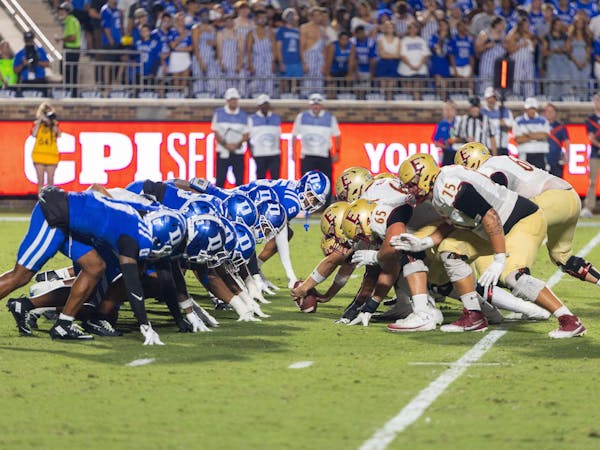When T he made an immediate impact by reshaping the program’s culture and priorities. His emphasis was simple but effective: build around athleticism, defense, and transition basketball. By doing so, he restored the dominance that the United States had once taken for granted on the international stage.
Since his first Olympic campaign in 2008, where Team USA stormed to a gold medal in Beijing, the aura surrounding the program has returned. For more than a decadnow, the United States has been the team to beat, and in most competitions, it has been nearly impossible to dethrone them. The results spoke loudly—Krzyzewski’s system revitalized not only the way the team played but also how the world viewed American basketball.
But as Krzyzewski himself has often reminded audiences, nothing lasts forever. The rest of the basketball world is improving rapidly, and their success is not accidental. Across Europe, South America, and increasingly in Africa and Asia, countries are taking a more deliberate approach to player development. They emphasize teaching the fundamentals of the game to young children, often at earlier ages and in more structured environments than what is typically found in the United States.
This difference in approach has led to noticeable results. Players like Luka Dončić, Nikola Jokić, Giannis Antetokounmpo, and countless others have risen to stardom in the NBA, showcasing skill sets honed through years of methodical training. Many of these players developed in systems that placed a premium on fundamentals, spacing, team-oriented play, and overall basketball IQ.
By comparison, the American youth basketball system is often fragmented. Young athletes in the U.S. play more games than ever—AAU tournaments, high school seasons, camps, and showcases—but they may not always receive the same level of skill-based instruction. As Krzyzewski succinctly put it, “The game in our country is undertaught and probably overplayed.”
That observation captures the central challenge facing U.S. basketball development: players are logging thousands of minutes on the court, but the time isn’t always spent on refining skills, learning team concepts, or improving decision-making. Instead, the focus can lean too heavily on athleticism, highlight-reel plays, or short-term wins.
To address this growing concern, Krzyzewski is now teaming up with the NBA on a new initiative aimed at improving youth basketball education across the United States. While full details of the plan remain unclear, the goal is ambitious: to bring greater consistency and quality to how the game is taught at the grassroots level.
The task will be monumental. Unlike many European countries, where national federations have more centralized control over sports development, the United States is vast, diverse, and decentralized. That reality makes coordination difficult. Youth basketball in America involves countless stakeholders—AAU programs, high schools, private trainers, community leagues, and parents—all operating with their own priorities. Aligning them under a shared vision will not be easy.
Still, Krzyzewski’s track record suggests he is uniquely qualified to take on the challenge. His coaching career, from decades of success at Duke University to three Olympic gold medals with Team USA, has shown his ability to lead, innovate, and implement big-picture strategies. More importantly, his willingness to adapt has always set him apart. When he took over the national team, he introduced an approach that blended American athleticism with the discipline and cohesion often associated with international basketball. That same balance could guide this new effort.
The stakes are high. Consider the hypothetical Krzyzewski raised: if Anthony Edwards had grown up with the same developmental system as Luka Dončić, who would have the edge? Edwards’ athletic gifts are remarkable, but Dončić entered the NBA with a polished understanding of team basketball, spacing, and playmaking that came from years in Europe’s structured system. The question highlights a gap the U.S. cannot ignore if it wants to maintain long-term dominance.
The broader vision seems clear. If American kids can be introduced to strong team concepts, skill development, and basketball fundamentals at a young age—done in a way that reflects the unique culture and style of the United States—then the country’s basketball future will remain bright. The goal is not to simply copy the European model but to adapt the lessons learned into an American system that maximizes the nation’s deep pool of talent.
Krzyzewski’s partnership with the NBA signals a recognition that change must come from the top. With the league’s influence, resources, and global reach, there is a real opportunity to reshape how basketball is taught across the United States. Whether through revamped youth camps, new coaching education programs, or more unified structures, the hope is that the next generation of players will grow up with both the athleticism and the refined skills needed to excel at the highest level.
- For Krzyzewski, this effort is more than just another project—it’s a continuation of his lifelong mission to elevate thef. you t game. He knows the challenges are immense, but his vision is forward-looking: a United States where young players are taught not only how to play but how to think the game. If successful, the U.S. could once again widen the gtv we uap between itself and the rest of the world, ensuring that American basketball remains the global standard for years to come.t American basketball remains the global standard for years to come.American basketball remains the global standard for years to come.FTυ
Would you like me to expand this even further to pass 1,000 words (like a feature-length article), with more background on Coach K’s Team USA era and comparisons with international systems, or keep it closer to a crisp ~850–950 word analysis?





























